Algae-eating snails are a functional option for peaceful planted aquariums, but they rarely stand out in mixed communities. If you’d like an invertebrate that’s social, curious and colorful, then check out our guide to the stunning Giant Sulawesi or Rabbit Snail and see if they’re a good fit for your tank!
Introduction to the Rare Rabbit Snail
If you’ve never seen a tank of Rabbit Snails (genus Tylomelania), you might wonder what all the excitement is about. While most snails are added to aquariums for their algae-eating abilities rather than for appearance or personality, Rabbit Snails are different. Let’s take a look at what makes the Rabbit such an impressive invertebrate:
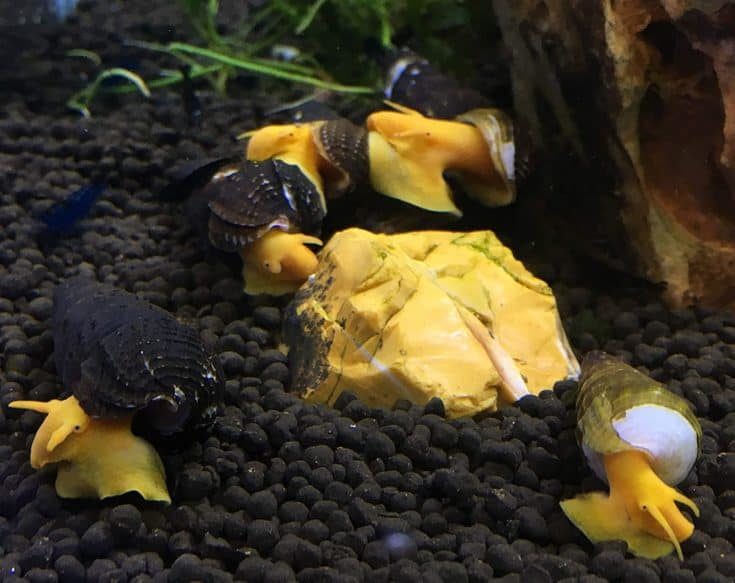
- Unlike small, shy and plain-looking species of aquatic snails, such as the Nerite and Ramshorn, Rabbits are big, curious and social, and really stand out from the other animals in your community.
- These snails are very active during the day and seek out interesting places in your tank to graze and explore.
- The appearance of Rabbit snails vary widely depending on the species, but their shells often sport bright colors or distinctive markings, and their soft bodies range from a vivid yellow to a charcoal black and may have additional spots or streaks of color.
Common Names
Rabbit Snail, Elephant Snail, Poso Snail, Giant Sulawesi Snail
Scientific Name
Multiple species in the Tylomelania genus
Care Level
Easy
Size
3 to 5 inches in length
Diet
Omnivore; feeds primarily on algae and decaying plant materials
Activity
Easy
Temperament
Curious, social and mellow
Minimum Tank Size
30 gallons
Temperature Range
68 to 84°F (76 to 82°F ideal)
Natural History and Habitat
Rabbit snails first became available for sale in the US in 2008 and are still rare and hard to find in most aquatic shops. These vivid invertebrates are found in warm, freshwater lakes and streams throughout Sulawesi, Indonesia, and are native to Lake Poso and the Malili Lake systems:
- There are more than 50 species in the Tylomelania genus currently, and scientists are working to distinguish and describe all of the individual species that may be sold generically as “Rabbit snails” in stores.
- Rabbit or Poso snails are omnivores who feed mostly on algae and rotting plant materials, but like most scavengers, they will happily eat other scraps of food as well.
- Unlike most species of snail, Rabbits are viviparous, which means they carry their developing embryos inside their bodies and give birth to live young instead of laying eggs (see Breeding below).
Snail Size and Appearance
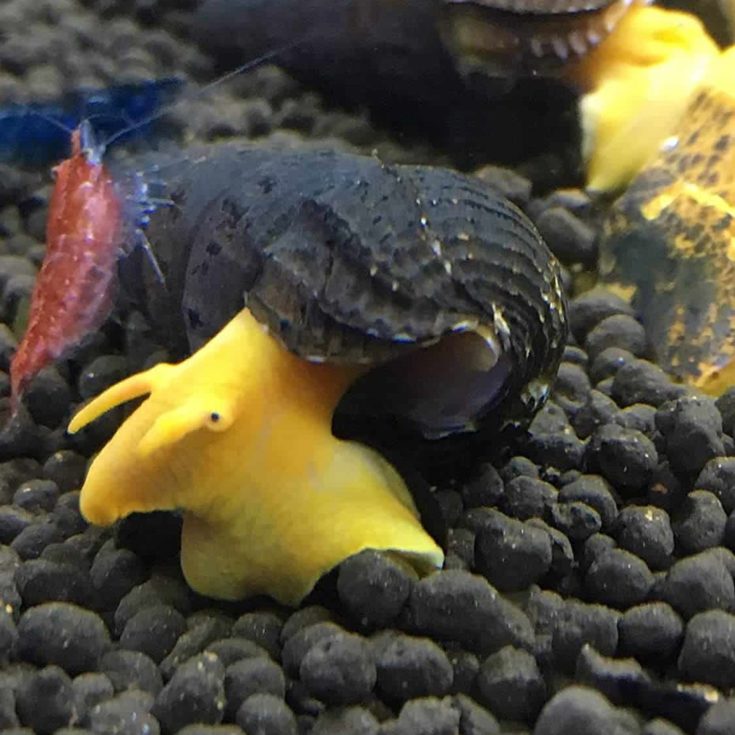
Rabbit snails are usually sold as 1 to 2-inch juveniles, and they can quickly reach 3 to 5 inches in length in a warm aquarium, hence their nickname as the Giant Sulawesi. Similar in shape to the Malaysian Trumpet Snail (MTS), Rabbits have a spiraling, conical shell that looks like an inverted unicorn horn.
Their most distinguishing feature is the appearance of their muscular ventral foot, which is the soft part of the body that extends outside their shell. Between their long, wrinkled proboscis and droopy tentacles, their faces display a range of comic expressions that makes them resemble a stuffed rabbit or elephant toy!
These snails are sexually monomorphic, so you won’t be able to discern a gender from their appearance. An interesting feature is the noticeable groove that runs down the right side of their soft body, from the shell to the edge of their foot. This is the transfer groove the encased embryo travels down during the birthing process!
Types of Rabbit Snails: Colors and Markings
Rabbit snails are available in a stunning range of colors for both shell and soft body, and may have additional spots or slashes of color on their ventral foot that further emphasizes their comical, elephant, or bunny-like appearance. Species vary widely in their shell textures, colors and markings, but overall:
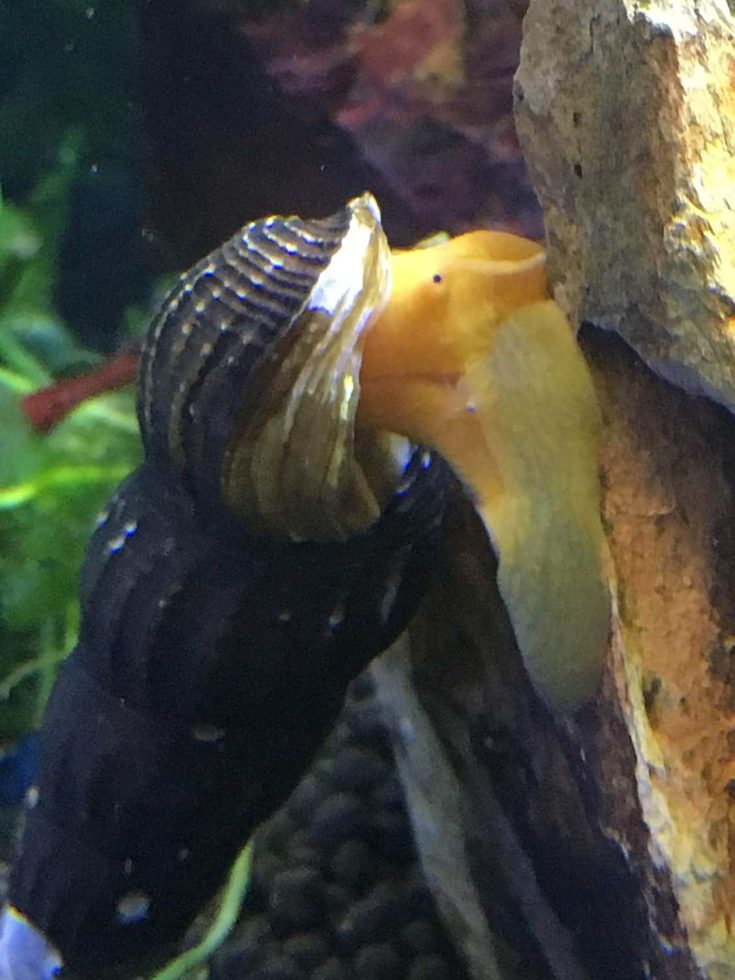
- Their soft body parts range from a vivid yellow, orange, red or cream to a deep charcoal grey or black, and may be monochromatic or multicolored.
- Many snails have additional black, white or yellow markings on their face and soft bodies that may appear as streaks or spots of color, or may resemble the wrinkles on an elephant’s trunk.
- Their shells range from smooth to rough and are often a multi-colored mix of white, black, brown, grey and/or orange. It’s fairly common in adult snails to see a small amount of dissolution on the oldest part of the shell, near the tip or point.
When shopping for these rainbow-colored invertebrates, keep in mind they may be sold under a variety of names since the specific species is rarely known. The most common types I’ve seen for sale in the US include:
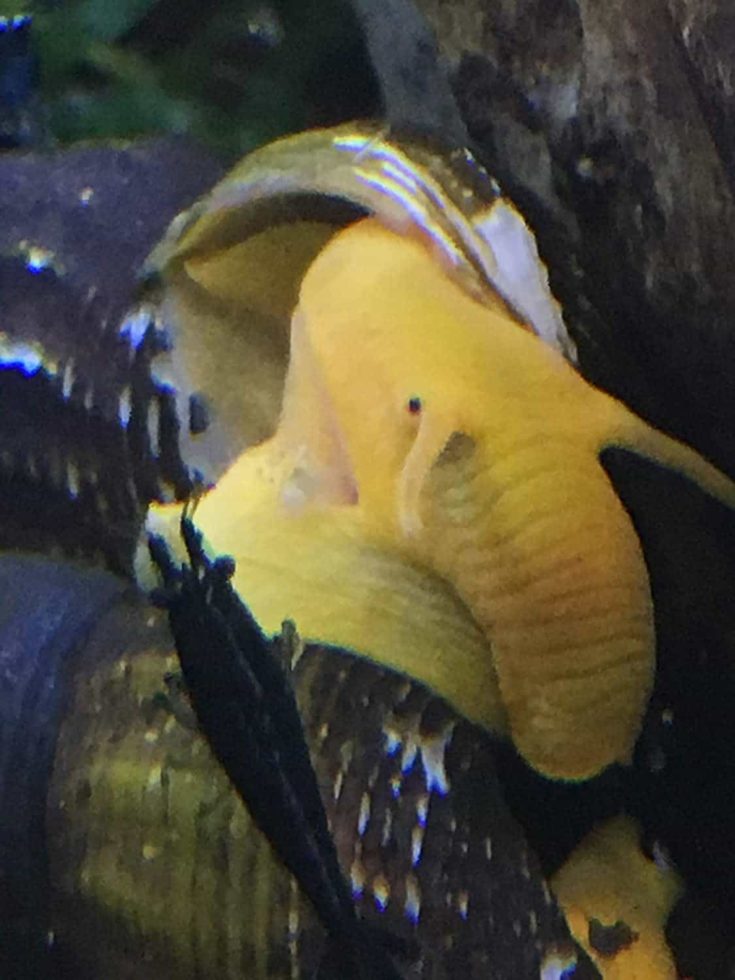
- Giant Sulawesi Rabbit Snails
- Black, Golden, Red, Yellow, Orange or Dark Chocolate Rabbit Snails
- Yellow or Yellow & White Poso Snails
Average Lifespan
Rabbit snails typically live for 1 to 3 years in an aquarium setting, but you may be able to keep them even longer in spacious set-ups if you pay diligent attention to diet and water quality.
Behavior and Temperament
Rabbit snails are active daytime grazers who use all parts of your tank and even burrow in the substrate. They’re not shy, and with their bright colors, large size and outgoing personality, you’ll easily be able to spot them in your tank most of the time:
- These peaceful invertebrates are curious, social and enjoy exploring their environment as they search for edible scraps and patches of algae.
- Rabbit snails may cluster together as they feed, or when they withdraw inside their shell to sleep.
- These snails move in a jerky fashion, almost as though they’re struggling to lug the huge, spiral shell behind them, which just heightens the comedy of their appearance.
How to Care for Your Rabbit Snail Tank
Rabbit snails are generally easy to care for and make an ideal choice for new fish keepers, but these giant-sized invertebrates do have a few requirements you’ll need to meet if you want to maintain a healthy population.
Tank Set-up and Habitat Requirements
Unlike their MTS cousins and many other popular aquatic snails, Rabbits are not suited to small or Nano aquariums or simple fish-bowl habitats. What kind of set-up do you need for a group of giant snails who might grow nearly half-a-foot in length?
Aquarium Size
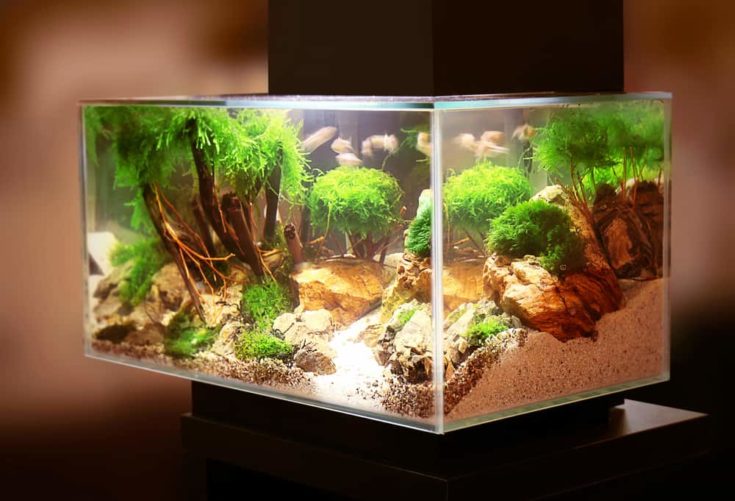
Rabbit snails do best in spacious aquariums. While you could probably get away with keeping a single snail in a 20-gallon tank, I recommend at least 30-gallons capacity for two snails, and bigger is the way to go if you can. You can go with any shape you prefer, so feel free to get a portrait-style or long breeder tank if you’d like.
Substrate
Since Rabbit snails do burrow into their substrate at times, it’s best to use aquatic soil or fine sand instead of coarse aquarium gravel in your snail tank. This will make it easy for them to dig and prevent any injuries to their soft bodies or muscular feet. These snails are not a good option for bare aquariums, however.
Water and Temperature Parameters
While Rabbits can survive in water from 68 to 84°F, they definitely prefer warmer water between 76 and 82°F. Their metabolism slows down, and they may not be as active or grow as large if you’re not using a heater. They need hard, alkaline water with a dKH of 2 to 15 and pH from 7.3 to 8.2.
Tank Maturity, Filtration and Aeration
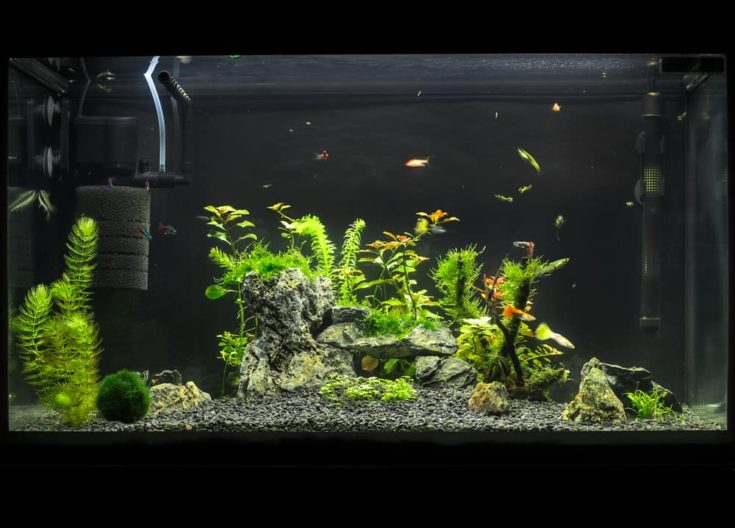
Giant snails produce a lot of waste and are very sensitive to ammonia and nitrate poisoning, so they do best in fully-cycled, mature tanks. I’d avoid adding them to new set-ups, but if you do, be sure to test the water regularly until your bacterial populations are well established (3 to 6 months):
- You’ll need a robust canister or HOB filter for your snail tank to keep your water clear and fresh.
- Adding an air stone or bubbler can help maintain high oxygen levels and prevent Dead Zones in your tank and substrate.
- Snails are not picky about the flow rate, but young snails may be able to fit through the intake and get into your filtration system, so be sure to use a fine mesh or sponge tip to prevent injuries.
Lights, Plants and Decorations
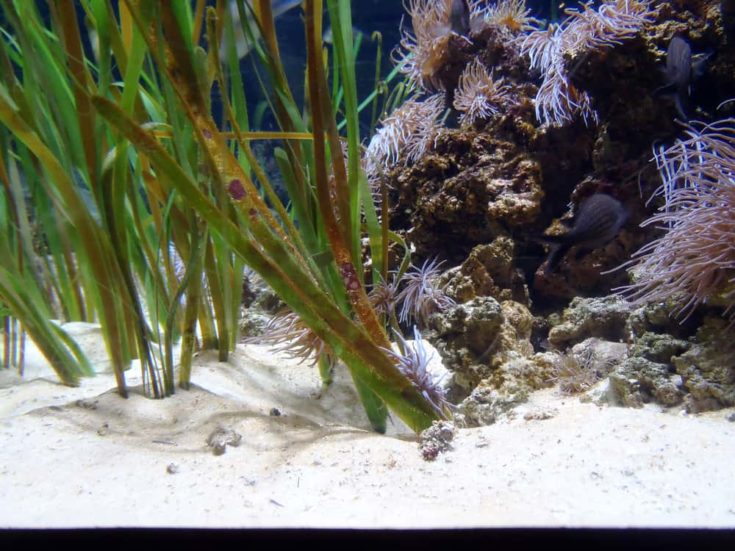
Rabbit snails may avoid brightly-lit areas of your tank, but this is usually a behavior seen in wild-caught adults instead of captive-bred juveniles. Young snails become accustomed to bright aquarium lights, although they may still prefer to graze in the shaded parts of your tank.
These snails are ideal for planted aquariums and enjoy feeding on rotting plant materials, but they are so big they may have problems moving through dense vegetation. It’s better to space your plants out to give them more room. You can use natural decor like rocks, bogwood and sticks, or any other decorations you prefer.
Maintenance
Snails are very sensitive to dirty aquariums, so you’ll want to be sure to change your aquarium’s water, clean your filters and replace the filter media on a routine schedule. You’ll also need to vacuum your substrate regularly to prevent a build-up of waste in the bottom of the tank.
Feeding
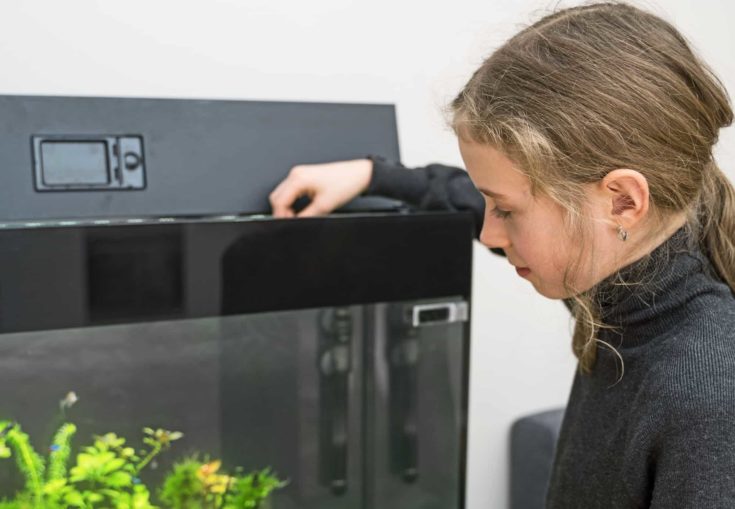
As algae-eating omnivores, Rabbit snails need both plant and animal foods, but not in equal amounts. If you’re keeping them in a mixed community with omnivorous fish or freshwater shrimp they’ll likely scavenge plenty of protein on their own. Balance their diet of tank algae with a daily meal and a few weekly treats:
- Offer community snails a primary diet of sinking algae wafers, spirulina pellets and powdered spirulina.
- Weekly treats of freshly blanched veggies like zucchini and cucumber help balance their nutrition, too. Calcium supports healthy shell growth, so offer blanched spinach, kale and other leafy greens for a boost!
- For breeding populations of snails or those in single-species or snail-only tanks, offer a few weekly protein treats of sinking omnivore or catfish pellets to round out their diet and encourage egg production.
Tank Mates
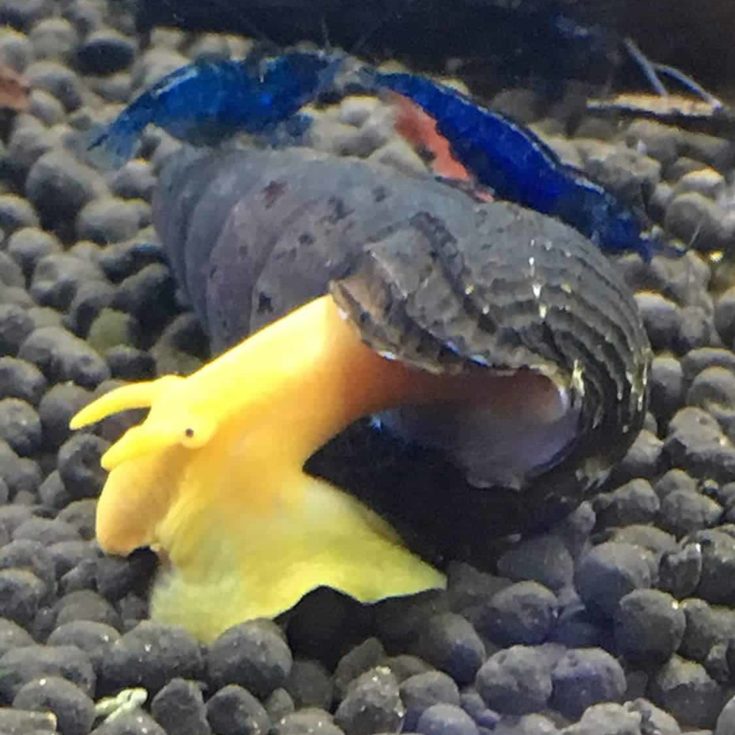
The best tank mates for giant snails are other peaceful, non-aggressive community fish and invertebrates. Look for animals that won’t bother your snails or their small offspring. You can even keep adult Rabbit snails with Assassin snails, although they will eat any babies. Ideal tank mates for Rabbit snails include:
- Small fish like tetras, rasboras, gourami, danios or livebearers like guppies and mollies
- Freshwater invertebrates such as Cherry, Amano or Ghost shrimp
- Other aquatic snails like the Ramshorn, Nerite, MTS or Mystery snails
Avoid keeping your Rabbits with semi-aggressive or aggressive tank mates like cichlids or barbs, or any animals that might feed on snails, like crayfish, loaches and even goldfish.
Breeding Rabbit Snails
The viviparous Rabbit snails are a little more challenging to breed than other freshwater snails, but only moderately so. They reproduce much slower than egg-laying species, so they won’t fill your tank with offspring. Rabbit snails are dioecious and have two distinct genders, even though males and females appear identical:
- You’ll have better success with breeding if you keep a group of 3 to 6 snails to increase the odds of a good male-female pairing.
- Males produce a spermatophore and pass it to the female, who takes it into her brood pouch to fertilize the eggs internally. Females can also store sperm, so they may produce some babies on their own.
Gestation varies by species, but Rabbit snails tend to give birth every 4 to 6 weeks on average. Changes in the environment may prompt the birthing process, so it’s not uncommon for snails to drop babies during shipping or right after moving into a new tank. Warmer water conditions (80°F+) increase breeding activity as well.
- After fertilization, the embryo develops inside the female’s brood pouch encased in a nutrient-rich egg sac. During birth, the sac travels down the transfer groove until it’s released in the tank.
- Shortly after, the gelatinous sac breaks open and releases the fully-formed, miniature Rabbit juvenile! Baby snails are usually 3.2 to 6.5 mm in length (0.125 to 0.25 inches) at birth, and immediately begin feeding on biofilm.
- Females usually carry 1 embryo at a time, but it’s not unusual for them to drop twins or triplets occasionally.
Health Concerns
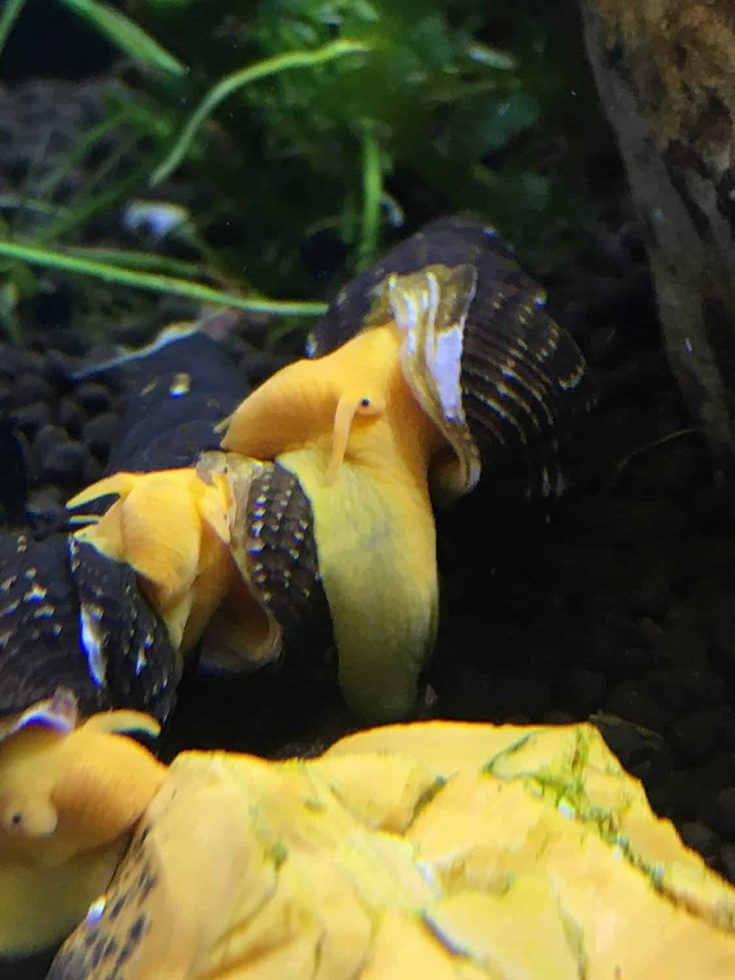
The biggest issue I’ve seen with Rabbit snails is their propensity to be infested with leeches. You’ll have to observe your snails closely and quickly remove any leeches you see hiding on their soft bodies. Some may hide under the shell, so it can take a few weeks to completely clear an outbreak.
Rabbit snails are also prone to problems with their shells and are sensitive to many medications. Like all aquatic snails, they need mineral-rich water to support healthy shell development:
- Soft or acidic conditions can cause shell disintegration and may eventually be lethal to your snails.
- Rabbit snails are very sensitive to copper and even minute amounts may be toxic. Avoid using copper-based aquarium medications or tap water contaminated with copper in a snail aquarium.
Ideal Rabbit Snail Set-Up: Equipment and Supply List
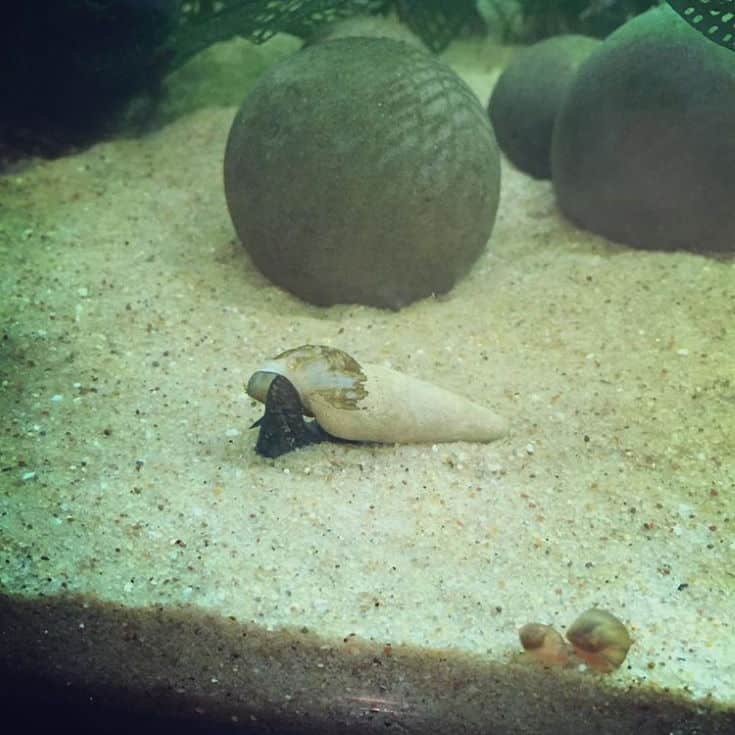
To support a breeding population of Rabbit Snails along with a nice variety of small fish and invertebrates, here’s a list of the things you’ll need to set up a great snail tank! Once it’s finished cycling (3 to 6 months), you can start adding your Rabbit snails:
To establish your aquarium, you’ll need:
- 40+ gallon tank with cover/lid, stand and light fixture
- Canister or HOB filter with sponge or mesh tip over the intake
- Aquarium heater
- Temperature gauge
- Airstone or bubbler with air pump and plastic tubing
- Sand, soil or fine gravel substrate
- Variety of live plants and decorations
To feed your snails, you’ll need to grab:
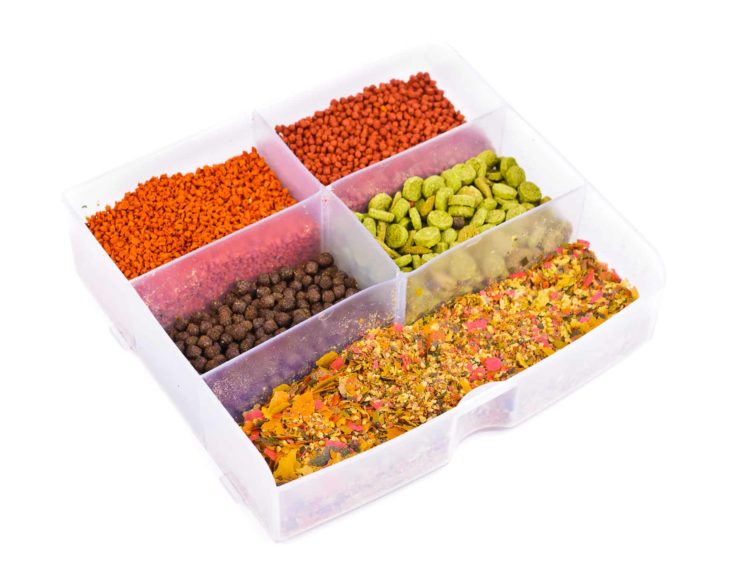
- Sinking algae wafers, spirulina pellets and powder
- Freshly blanched veggies
- Catfish or omnivore pellets for bottom feeders
To maintain your snail tank, you’ll need:
- Gravel vacuum, hoses and a bucket for water changes and maintenance
- Filter media
- Water testing kit (pH, hardness, ammonia, nitrates)
- Water conditioner
- Aquarium salt and forceps (leech control)
Common Name (species)
Rabbit Snail, Elephant Snail, Poso Snail, Giant Sulawesi Snail(multiple Tylomelania sp)
Family
Pachychilidae
Origin
Lake Poso and Malili Lake systems in Sulawesi, Indonesia
Diet
Omnivore; primarily algae and plant materials
Feeding
Sinking algae wafers, spirulina and freshly blanched veggies along with occasional protein-rich bottom feeder pellets as treats
Care Level
Easy
Activity
Active but slow-moving daytime grazer
Temperament
Curious, social and mellow
Tank Level
All areas
Minimum Tank Size
30 gallons
Temperature Range
68 to 84°F (76 to 82°F ideal)
Water Hardness
Hard water 2 to 15 dKH
pH Range
Alkaline water 7.3 to 8.2
Tank Maturity/Filtration
Needs mature, fully cycled habitat with well filtered, very clean water and high oxygen levels, but not sensitive to flow rates
Breeding
Viviparous; breeds slowly in aquariums
Compatibility
Ideal tank mates are other peaceful and non-aggressive fish and invertebrates like tetras, rasboras, gourami, small freshwater shrimp and other snails. Avoid keeping with cichlids, crayfish, loaches or goldfish
OK for Planted Tanks?
Ideal for planted tanks and enjoys eating decaying vegetation
Conclusion
Have you ever had a Rabbit snail, or have we convinced you to give them a try in your mature tank? We’d love to see your thoughts on these big, beautiful and funny-looking snails, so toss a comment below or come join our bigger community online!
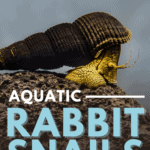
Have several they r beautiful and very memo like romaine lettuce as well
I put a rabbit snail in my aquarium two weeks ago and it has not come of the shell. It’s very deep in the shell. When I take it out of the water it looks like the pad expands a little and that’s all. Is it possible for it to stay in the shell this long? If so what can I do so it would come out?
Thank you.